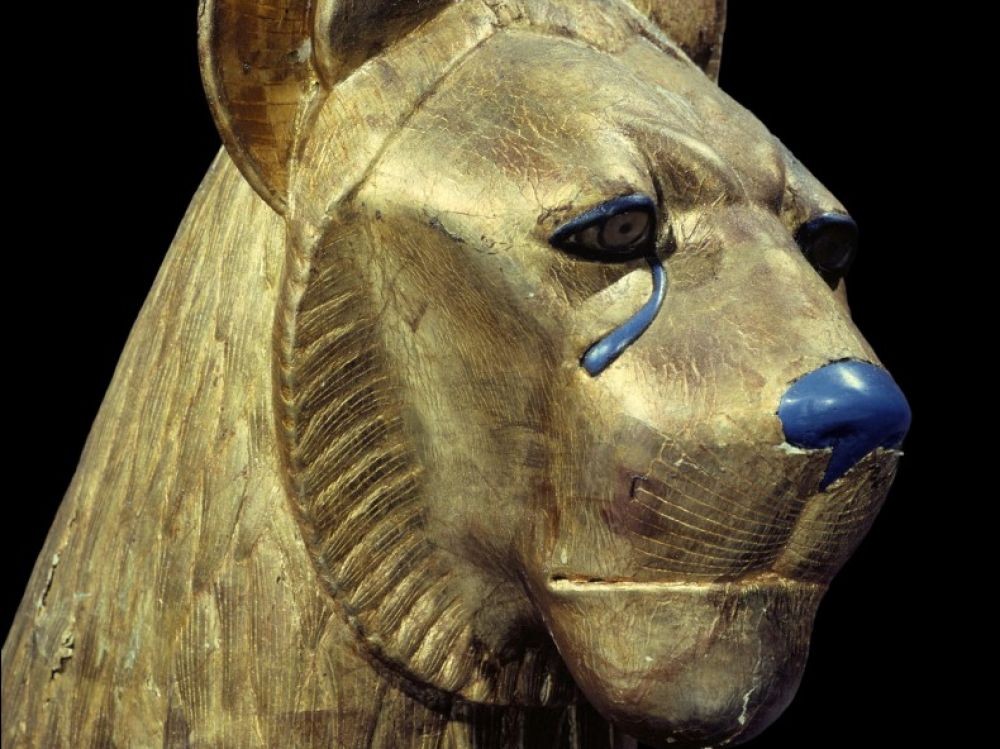Like hunting or victory scenes, the presence of wild animals in royal tombs symbolizes the power of the sovereign, capable of mastering chaos.

Sculpture in the shape of a cheetah or a lion from the tomb of the pharaoh Tutankhamun, discovered in the Valley of the Kings, Thebes, Egypt.
This article is from the Special Issue of Sciences et Avenir n°197 dated April-May 2019.
Stan Hendrickx is an archaeologist at the Media Arts and Design Faculty in Hasselt (Belgium). He is a specialist in iconography.
Sciences et Avenir:What type of objects have been discovered in predynastic burials?
Stan Hendrickx: The objects and the representations they carry have evolved over time. Between 4000 and 3500 BC, during the period known as Nagada I and the beginning of Nagada II, there are many red ceramic vases decorated with parallel white lines, the so-called whitecross lined . Most often, these geometric decorations are not figurative, rather imitating basketry motifs, with sometimes exceptions for hunting or victory scenes, but which remain marginal. Then around 3500 before. AD, another type of decorated ceramic appears, produced from a marly clay which takes on a grayer hue when fired. These are the vases that you see in all museums, the upper part of which is decorated with patterns painted in a purple-black color. Representations of boats, in particular, are numerous there, and it is thought that they may have funerary symbolism.
So these are specific vases, created for funerary furniture?
Nope ! These objects were used in everyday life! We have to realize that for us Westerners of the 21 e century, life and death are very different concepts, whereas in ancient Egypt there is no strict separation. Moreover, the sets never show funeral scenes. This kind of drawings exist but they are fakes, added at the end of the 19 e century and at the beginning of the 20 th century… on authentic vases. Some have even ended up in collections, such as the famous jar exhibited at the British Museum in Harrogate, which seems to represent the funeral of a deceased aboard a boat.
You mentioned the frequent presence of boats on the objects found in the graves…
We can think that from the predynastic period, the boat became a symbol of the passage to the afterlife, because it allows to cross the kingdom of the dead and to sail towards a new life. Throughout Egyptian civilization, it was aboard a boat that the deceased king traveled the sky in the company of the god Re. And it was probably for the "journey" of Pharaoh Cheops that a life-size boat was buried next to the Great Pyramid of Giza. Boats probably have another symbolic dimension, which is to assert royal, political and military power. On a Nubian bas-relief from the end of the 4 th millennium discovered in Gebel Sheikh Suleiman and dismantled in the early 1960s to be exhibited in the museum of Khartoum (Sudan), we see a ship to which a prisoner is attached, while under the hull lie four dislocated bodies... It is a scene of military victory in which the king is not represented:the boat alone is enough to embody the power of the winner.
These representations are therefore essentially symbolic?
Sure ! In the same way, one frequently finds in predynastic iconography scenes of hunting without a hunter. For the Egyptians, the desert was chaos. Representing hunting, burying wild animals, all this probably made it possible to assert the power of an elite, and ultimately of a king capable of mastering this chaos. It is also for this reason that we find representations of crocodiles on rock frescoes located 50 kilometers from the Nile, alongside boats. We often tend to want to sketch out a reality from the iconography we discover. But the Egyptians did not seek to "photograph" reality. They probably saw no point in representing a reality they encountered every day. Moreover, this is also the case in our own history. Take the painting of the 17 th century ! Considered to be very realistic, it is actually full of hidden symbols...
